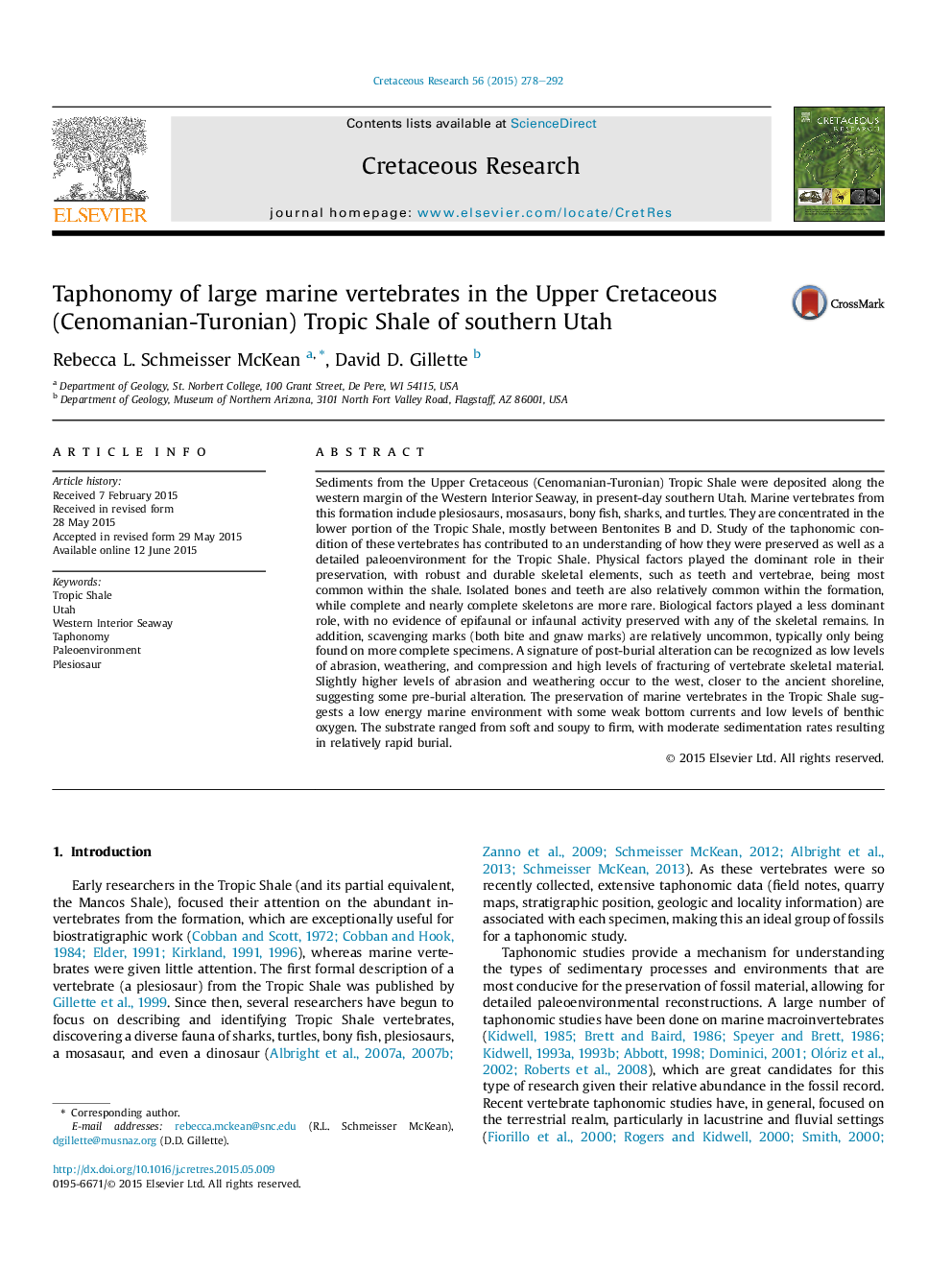| کد مقاله | کد نشریه | سال انتشار | مقاله انگلیسی | نسخه تمام متن |
|---|---|---|---|---|
| 4746940 | 1642067 | 2015 | 15 صفحه PDF | دانلود رایگان |

• Physical factors were dominant in marine vertebrate preservation in the Tropic Shale.
• Teeth and other durable elements are most common in the formation.
• Significant post-burial alteration affected marine vertebrate skeletal material.
• The paleoenvironment was low-energy marine with weak bottom currents.
• Substrate firmness and benthic oxygen varied throughout deposition of the shale.
Sediments from the Upper Cretaceous (Cenomanian-Turonian) Tropic Shale were deposited along the western margin of the Western Interior Seaway, in present-day southern Utah. Marine vertebrates from this formation include plesiosaurs, mosasaurs, bony fish, sharks, and turtles. They are concentrated in the lower portion of the Tropic Shale, mostly between Bentonites B and D. Study of the taphonomic condition of these vertebrates has contributed to an understanding of how they were preserved as well as a detailed paleoenvironment for the Tropic Shale. Physical factors played the dominant role in their preservation, with robust and durable skeletal elements, such as teeth and vertebrae, being most common within the shale. Isolated bones and teeth are also relatively common within the formation, while complete and nearly complete skeletons are more rare. Biological factors played a less dominant role, with no evidence of epifaunal or infaunal activity preserved with any of the skeletal remains. In addition, scavenging marks (both bite and gnaw marks) are relatively uncommon, typically only being found on more complete specimens. A signature of post-burial alteration can be recognized as low levels of abrasion, weathering, and compression and high levels of fracturing of vertebrate skeletal material. Slightly higher levels of abrasion and weathering occur to the west, closer to the ancient shoreline, suggesting some pre-burial alteration. The preservation of marine vertebrates in the Tropic Shale suggests a low energy marine environment with some weak bottom currents and low levels of benthic oxygen. The substrate ranged from soft and soupy to firm, with moderate sedimentation rates resulting in relatively rapid burial.
Journal: Cretaceous Research - Volume 56, September–December 2015, Pages 278–292